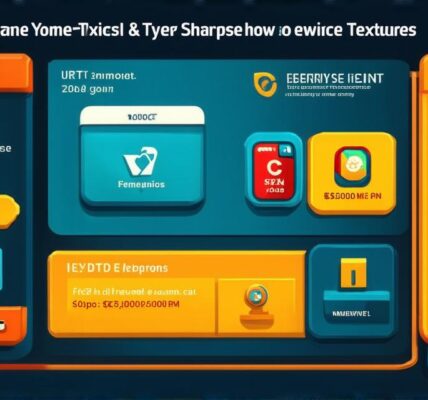1. Building Anticipation: The Power of Teasers and Trailers
One of the most effective ways to generate excitement and anticipation around a new video game is through teaser campaigns and trailers. By releasing tantalizing snippets of gameplay or revealing key features and characters, developers can pique players’ interest and create a sense of urgency around the game’s release.
For example, the launch of Fortnite, a popular multiplayer battle royale game, was built on a massive social media campaign that involved creating buzz through teaser posts, videos, and collaborations with famous streamers and content creators. The game’s creators also leveraged the power of user-generated content by encouraging players to create their own unique in-game characters and skins.
2. Creating a Sense of Community: Building Hype Through Social Media
In addition to teasers and trailers, social media can be a powerful tool for building a sense of community and generating excitement around a new video game release. By creating engaging content and interacting with fans through comments, messages, and other social features, developers can create a sense of connection and belonging among players.
This approach was particularly effective for the launch of Minecraft, which quickly became one of the most popular and successful video games of all time. The game’s creators built a vibrant online community by encouraging players to share their creations, collaborate with others, and participate in regular events such as “MineCon” and other community-driven initiatives.
3. Influencer Marketing: Leveraging the Power of Celebrity Endorsements
Another effective way to generate buzz around a new video game is through influencer marketing. By partnering with celebrities, streamers, and content creators who have a large following among your target audience, developers can tap into their influence and reach a wider audience.
For example, the launch of Pokemon Go was heavily promoted through partnerships with popular celebrities such as Dwayne “The Rock” Johnson and Serena Williams, who were featured in promotional materials and provided social media endorsements. The game’s creators also leveraged the power of user-generated content by encouraging players to share their experiences and create unique gameplay content that was then shared on social media.
4. Pre-Launch Events: Building Excitement Through Early Access
Pre-launch events can be a powerful way to generate excitement and anticipation around a new video game release. By offering early access to select players, developers can build a sense of exclusivity and create a buzz around the game’s launch.
For example, the launch of Fortnite was built on a massive pre-launch event called “Fortnite: Save the World,” which involved inviting select players to participate in a series of challenges and events leading up to the game’s official release. The game’s creators also offered exclusive skins and other perks to early adopters, creating a sense of exclusivity that helped generate buzz around the game’s launch.
5. Collaborations: Partnering With Other Brands and Companies
Collaborations with other brands and companies can be a powerful way to generate buzz and excitement around a new video game release. By partnering with brands that share a similar target audience, developers can tap into their influence and reach a wider audience.
For example, the launch of Fortnite was heavily promoted through collaborations with popular brands such as Nike, Adidas, and Coca-Cola, which created unique in-game skins and other content that helped generate buzz around the game’s launch. The game’s creators also leveraged the power of user-generated content by encouraging players to create their own unique collaborations with other brands and companies.
Summary: Optimizing Your Video Game Launch for Maximum Impact
In conclusion, successful video game releases require a strategic approach that involves building anticipation, creating a sense of community, leveraging influencer marketing, offering pre-launch events, and collaborating with other brands and companies. By following these tips and adapting them to your specific needs and audience, you can create a launch that will not only capture players’ imaginations but also generate buzz and excitement around your game.
FAQs:
Q: How long should I wait before releasing my video game?
A: There is no one-size-fits-all answer to this question, as it depends on factors such as the complexity of the game, the resources available for development and marketing, and the competitive landscape. However, in general, it’s a good idea to aim for a launch within 12-24 months after starting development to ensure that players are still interested and the game remains relevant.
Q: How can I build a sense of community around my video game?

A: Building a sense of community around your video game requires a strategic approach that involves creating engaging content, interacting with fans through comments, messages, and other social features, and encouraging players to collaborate with others and participate in regular events. It’s also important to listen to player feedback and make changes based on their suggestions to keep them engaged and invested in the game.
Q: How can I leverage influencer marketing for my video game launch?
A: To leverage influencer marketing effectively, you need to identify influencers who have a large following among your target audience and whose interests align with those of your game. You should then reach out to them and offer incentives such as exclusive content or early access in exchange for social media endorsements and other promotional materials. It’s also important to track the impact of your influencer marketing campaign using analytics tools to measure its effectiveness and adjust your strategy accordingly.




